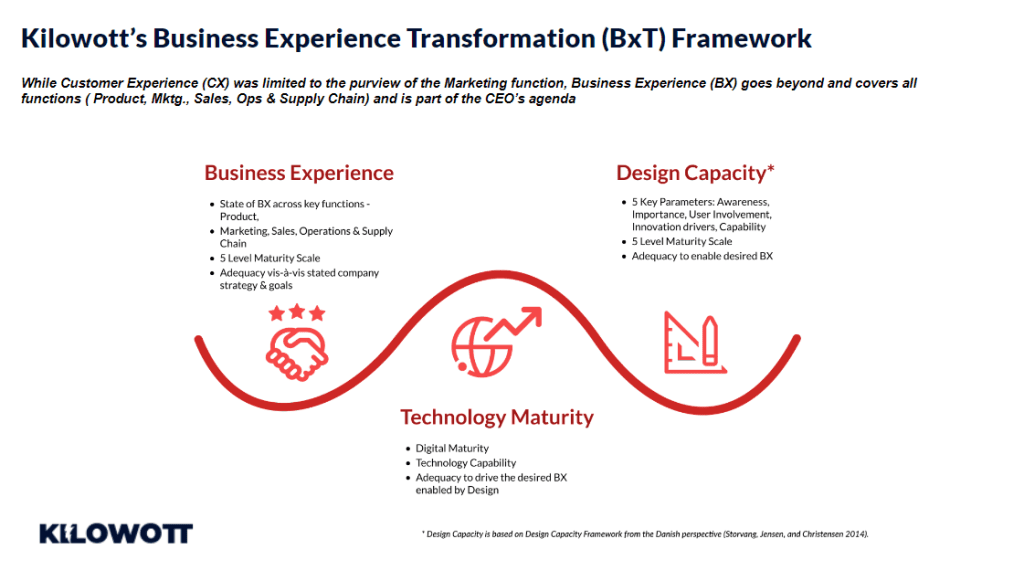As nice as that old pair of slippers may seem while you’re curled up by the fire, the wear and tear will eventually catch up with them, and they might no longer be adequate for your footwear needs. No matter how much you love them, you’ll have to think about getting a new pair instead.
Even while your legacy systems could appear to be safe and dependable on the surface, sooner or later IT departments will need to choose whether to update their business procedures and apps or risk falling behind the competition.
Prepare your business for its future
- – Is your business unable to keep up with today’s global scale and performance?
- – Is it becoming increasingly difficult and expensive to operate your systems?
- – Are you losing out to competition because you are unable to adapt?
If you answered yes to any of these questions, then this is a good time to consider modernization and pivot your business to deliver on today’s expectation of global scale and performance without breaking the bank so to speak!
Lest this appear as a candid proposition, be assured that the best practitioners of modernization understand that such considerations are not taken lightly. Every business is unique, in a certain sense, and every business will have its unique journey into modernization.
That said, given the unprecedented scale at which we’re learning and applying intelligence, there are certainly some patterns and approaches that yield predictable results when applied correctly. This article is a general overview of the methods and mechanisms that enable modernization, specifically legacy system modernization.
Significant improvements in performance, agility, and innovation are expected optimal outcomes.
What is Legacy System Modernization?
If your business is dependent on technology, you have most likely encountered similar propositions in the past. The computational systems on which your business runs most likely grew with your organization as it scaled.
It probably had several features added on as your business introduced newer capabilities to meet customer needs. It may have integrated with several other such systems or may have been completely rebuilt or ported from a different system architecture, and it most likely was very well architected for that time, meeting the SLA requirements predictably. It may have also been able to scale to a certain extent with additional hardware. It works sort of well for now.
A system in production can reach a state where it has gradually acquired a certain inertia which makes things difficult to maintain, expensive to operate and inadequate to meet the modern demands of elastic scale and performance.
The tipping point in most cases is where the system becomes infeasible to change, because this ultimately can cause a business to stagnate and not grow. It is therefore in the context of business that the legacy system gets defined rather than in the context of technology i.e. business leaders need to realize that their systems are legacy and not the technologists or engineers.
Given that the definition of a legacy system is one that comes from business, it stands to reason that application modernization, or app modernization as it commonly shortened to, is a business requirement, and must be treated as so.
It also means that app modernization is manageable as software development life cycle (SDLC) projects, complete with industry standards and best practices, with controls for scope, cost and schedule, for expected quality outcomes.
Challenges in Initiating Legacy System Modernization
- – Why fix something that isn’t broken?
- – Didn’t we just do that last time around – and fail?
- – Do we even understand what the system does?
These, and many more, are some of the questions many stakeholders will ask – and are not without merit. It may be that most of those questions are answerable for some businesses.
However, it is important to note that organizational buy-in is neither a necessary nor sufficient condition for modernization. In situations where outcomes are not clear to the stakeholders, business leaders must rely on their vision for taking app modernization forward so that their business can continue to grow.
Operational overheads
App modernization will usually be executed as a greenfield or a brownfield project, and either will incur non-trivial operational overhead. While brownfield projects tend to have significantly higher management overhead due to maintaining simultaneous parity in operations, greenfield projects may also run into this on their own for large or drastic changes. Organizations must accordingly plan for resource allocations, rollbacks, failovers, redundancies and other risk mitigation techniques as part of their app modernization.
Disconnected skills
App modernization needs to be executed within the parameters organizational competencies. The business needs to ensure that the teams have skills that are impedance-matched to the processes and technologies that they will be working with. Skills that are disconnected from the modernization process should be upgraded either prior to or as part of the modernization effort.
Bad timing
While business leaders provide the broad vision and strategy on app modernization, CIOs, CTOs and IT leaders must weigh a number of criteria in order to identify when to modernize, for maximum impact and minimal disruptions. Seasonal peaks, structural reorganization, audit windows, etc can derail app modernization and have a detrimental impact on the business.
What Factors Influence A Company’s Decision To Modernize Its Legacy Systems?
- – Cost – Maintaining aging infrastructure is more expensive than maintaining contemporary infrastructure.
- – Security – One of the most serious concerns of unsupported legacy infrastructure is the vendor’s failure to deliver security upgrades to protect against an ever-changing threat landscape, or the difficulty in keeping up with patches and updates, which can leave you susceptible.
- – Process – Legacy systems are unable to keep up with the processes required to avoid penalties or loss of certification as regulatory auditing and controls become increasingly demanding.
- – Competition – It’s practically impossible to stay up with customer experience needs and bring inventive new products and services to market ahead of your competitors without modernized apps. Modernized IT that supports DevOps approaches and shortens development and release cycles is becoming increasingly important for innovation.
- – Solutions – Lack of access to next-generation solutions to help your staff connect, collaborate, and operate more efficiently is limiting their productivity.
What approaches can an enterprise take for legacy modernization?
The majority of legacy modernisation efforts might be revolutionary or evolutionary in nature.
- – Revolutionary modernization – A thorough, from-the-ground-up infrastructure overhaul is referred to as revolutionary modernization.
Mergers and acquisitions, for example, frequently need this technique when one company must swiftly adapt to the new entity’s infrastructure.
Another scenario in which a revolutionary approach is used is when the legacy system has progressed from a burden to a risk.
When old systems are no longer supported by their vendors, organizations are left with security and compliance gaps, as well as no new patches or upgrades.
This strategy is fraught with danger, interruption, and higher costs
. - – Evolutionary modernization – Organizations that are more risk averse, frequently opt for the evolutionary strategy.
The evolutionary modernization strategy is a multi-phased, long-term plan that aims to accomplish the same objectives as the revolutionary approach.
The evolutionary approach takes a workload-by-workload approach to modernization, allowing enterprises to modernize one workload at a time.
This method is less disruptive to businesses and spreads costs out over time.
This strategy could be used by organizations trapped under vendor contracts to update around the legacy system as they wait for their contracts to expire.
Hybrid models can enable enterprises to connect cloud resources with on-premises settings in order to assist old legacy transformation.
How can Kilowott’s BXT framework modernize legacy systems?
The Business Experience Transformation (BXT) model innovation challenges the status quo – reimagining current functions and processes to transform for the present and for the future.
- Articulating the aspirations and expectations of the organization for its engagement with the digital world and of putting the customer at the heart of everything it does.
- Customers’ needs and expectations are the overriding consideration in deciding what services to provide, how and through what channels.
- Empowering the staff to think and act digitally, to be innovative and to seek ways to transform business processes and services for more engaging customer experiences.
- Provides the criteria by which to prioritize digital initiatives so resources and energies are directed and planned appropriately.
- Generates buy-in from staff and executives by explaining why BX is important, how important it is, and what the benefits are.

The model is intended as a tool to define current and target states of maturity; however, it is not prescriptive as to suggest a best way to achieve the target state. It provides guidance on the development of BXT.
The level to which an organization needs to be mature in each area/dimension is dependent on your own business strategy (focus of the business), business model ( business configuration/design to realize the business strategy), and operating model (capabilities to be executed against the business strategy and model).
The model can be validated at different stages, by assessing what level “As is” against the desired, “To Be” in terms of the given maturity levels across the whole organization or individually across the dimensions/pillars which make up the Organization.
It not only addresses implementing better technologies, but also addresses aligning culture, people, structure throughout the organization. based on strategy, business model, and operating model.
To decide between adopting an evolutionary or a revolutionary approach, you should start with a thorough evaluation of your operations to determine the best path forward. The evaluation process should include assessing the following considerations:
- – Workload – Audit applications and software to determine their business value, criticality and where there are opportunities to modernize. Assess workloads holistically in context of the go-forward business direction.
- – Architecture – Review infrastructure elements, performance and ROI to assess where newer technologies can deliver better outcomes.
- – Financial – Evaluate spend to find budget burdens and ways to optimize resources to support current operations and prepare for what’s next.
- – Uncertainty – Weigh the potential for business interruption, as well as any related implications on business processes and organizational culture, against the goals of your legacy system modernization project. Consider the risks of preserving the legacy system in its current state, such as upkeep for out-of-support systems or those with limited support resources.
- – Execution – Determine whether new skill sets, training, and processes must be taken into account when calculating modernization costs and deadlines.
- – Planning – This is for system security before, during, and after modernization to avoid data loss, outages, and exposure. Organizations should confirm adherence to legislative and industry compliance regulations in the new environment in the security plan.
Need help in modernizing your legacy system? Let’s talk!






